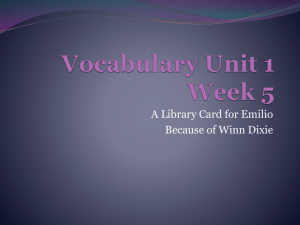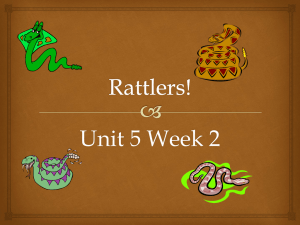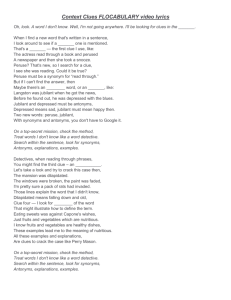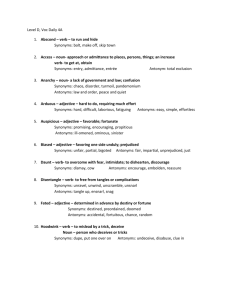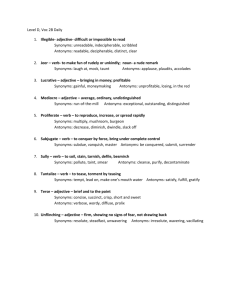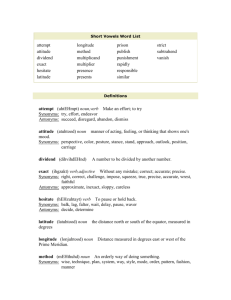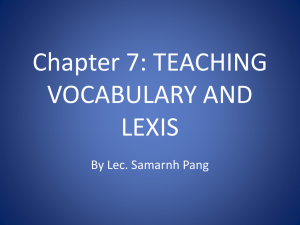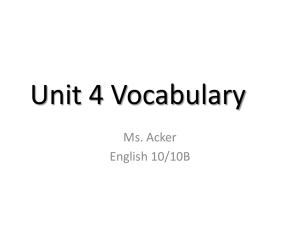Grace for President
advertisement
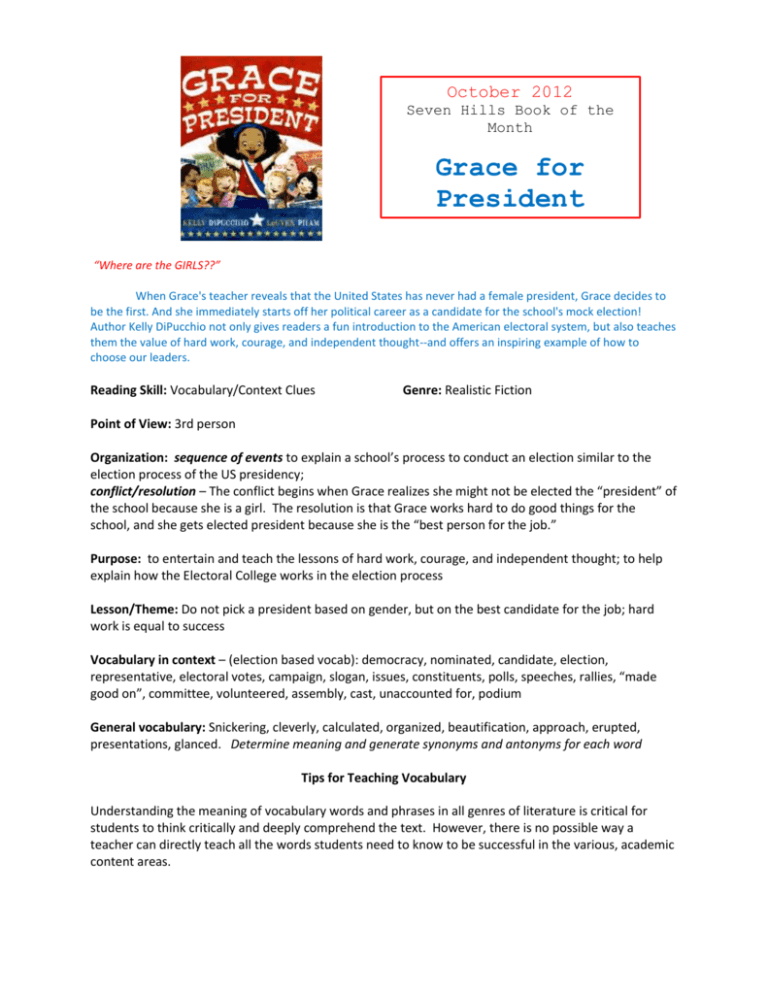
October 2012 Seven Hills Book of the Month Grace for President Written by Kelly DiPucchio Illustrated by LeUyen Pham “Where are the GIRLS??” When Grace's teacher reveals that the United States has never had a female president, Grace decides to be the first. And she immediately starts off her political career as a candidate for the school's mock election! Author Kelly DiPucchio not only gives readers a fun introduction to the American electoral system, but also teaches them the value of hard work, courage, and independent thought--and offers an inspiring example of how to choose our leaders. Reading Skill: Vocabulary/Context Clues Genre: Realistic Fiction Point of View: 3rd person Organization: sequence of events to explain a school’s process to conduct an election similar to the election process of the US presidency; conflict/resolution – The conflict begins when Grace realizes she might not be elected the “president” of the school because she is a girl. The resolution is that Grace works hard to do good things for the school, and she gets elected president because she is the “best person for the job.” Purpose: to entertain and teach the lessons of hard work, courage, and independent thought; to help explain how the Electoral College works in the election process Lesson/Theme: Do not pick a president based on gender, but on the best candidate for the job; hard work is equal to success Vocabulary in context – (election based vocab): democracy, nominated, candidate, election, representative, electoral votes, campaign, slogan, issues, constituents, polls, speeches, rallies, “made good on”, committee, volunteered, assembly, cast, unaccounted for, podium General vocabulary: Snickering, cleverly, calculated, organized, beautification, approach, erupted, presentations, glanced. Determine meaning and generate synonyms and antonyms for each word Tips for Teaching Vocabulary Understanding the meaning of vocabulary words and phrases in all genres of literature is critical for students to think critically and deeply comprehend the text. However, there is no possible way a teacher can directly teach all the words students need to know to be successful in the various, academic content areas. Here are some tips taken from research on vocabulary instruction: -no single research-based method for teaching vocabulary -use a variety of direct and indirect methods -students should be explicitly taught both specific words and word-learning strategies - vocabulary should be seen in rich contexts provided by authentic texts, rather than in isolated vocabulary drills -students should be actively engaged in using and thinking about word meanings and in creating relationships among words -students need to encounter words repeatedly and in more than one context (but no skill and drill) According to research, there are four components of an effective vocabulary program: 1. wide or extensive independent reading to expand word knowledge 2. instruction in specific words to enhance comprehension of texts containing those words 3. instruction in independent word-learning strategies, and 4. word consciousness and word-play activities to motivate and enhance learning For the first component, students should read widely every day during the work period in independent and partner-reading. That’s why it is VITAL that students spend significant amounts of time in text DAILY. The second component of explicit instruction can be accomplished when high-utility words are directly taught that students can transfer to many texts or content areas. This can be done through graphic organizers such as the Frayer Model, or Thinking Maps. Students can use words and/or pictures to complete the Frayer Model. Thinking Maps are valuable tools where both teacher modeling and student practice can be accomplished. Below are some examples: Circle Map – Target Word is displayed in middle of the map, and synonyms or simple definitions of the target word can be brainstormed in the circle Bubble Map – Target word in middle, description of target word make up the spokes from the target word Double Bubble – compare/contrast two words Tree Map – Target Word on top line of graphic – with simple definition. Synonyms, antonyms, and student generated sentences with target word on bottom of tree map Brace Map – parts of the target word are listed individually on lines of brace map to help determine definition (prefix, root word, suffix; e.g. preheated) Bridge Map – Students create analogies with high utility vocabulary words that secure the word in long term memory The third component is instruction in independent word learning strategies, such as using context clues to determine word meaning. Context clues involves using other words and phrases around the target word to infer the meaning of the unknown word. It is recommended to teach five types of context clues: definition, synonym, antonym, example, and general. Attached is a Context Clue Chart with examples of each to help you explicitly teach the context clue strategy. The fourth component is word consciousness and word play. Create an atmosphere of “word consciousness” by modeling excitement that words are AWESOME! When you or your students come across unusual or high-utility words, post them on a special chart/bulletin board in your room and reward students for using the word in everyday conversation or in their writing. Use cooperative learning activities for students to talk purposely about vocabulary words, such as Inside-Outside Circle. Pick a target word and students in the inside circle partner up with a student in the outside circle to discuss definition of target word. Then either inside or outside circle moves and new partners generate synonyms of target word. Move partners again and generate antonyms, or generate sentences with the target word. Other cooperative learning strategies where students can follow this same process are: Mix and Match, Rally Table, etc. Variety in this type of purposeful talk about critical vocabulary keeps student engagement high. TEKS for Determining Meaning in Context K – no TEK for this concept, but can use 1st grade TEK 1.6C determine what words mean from how they are used in a sentence, either heard or read 2.5B use context to determine the relevant meaning of unfamiliar words or multiple-meaning words 3.4B use context to determine the relevant meaning of unfamiliar words or distinguish among multiplemeaning words and homographs 4.2B use the context of the sentence (e.g. in-sentence example or definition) to determine the meaning of unfamiliar words or multiple-meaning words 5.2B use context (e.g. in-sentence restatement) to determine or clarify the meaning of unfamiliar or multiple meaning words TEKS for Vocabulary Development K.5C identify and sort pictures of objects into conceptual categories (e.g. colors, shapes, textures) 1.6D identify and sort words into conceptual categories (e.g. opposites, living things, etc.) 2.5C identify and use common words that are opposites (antonyms) or similar (synonyms) in meaning 3.4C identify and use antonyms, synonyms, homographs, and homophones 4.2C complete analogies using knowledge of antonyms and synonyms(e.g. boy:girl as male: ___ or girl: woman as boy: ___) 5.2C produce analogies with known antonyms and synonyms (e.g. up:down as big:little or small:tiny as big:large) TEKS for Playful Uses of Language (No TEKS for K-2, but should still address playful language used in context of stories, poems, etc.) 3.4D identify and apply playful uses of language (e.g. tongue twisters, palindromes, riddles) 4.2D identify the meaning of common idioms 5.2D identify and explain the meaning of common idioms, adages, and other sayings TEKS for Using Word Parts to Determine Meaning -No TEKS for K-1, but introducing word parts at appropriate times is encouraged 2.5A use prefixes and suffixes to determine meaning of unknown words (e.g. allow/disallow) 3.4A identify the meaning of common prefixes (e.g. in, dis) and suffixes (e.g. –full, -less) and know how they change the meaning of roots 4.2A determine the meaning of grade level academic English words derived from Latin, Greek, or other linguistic roots and affixes 5.2A determine the meaning of grade-level academic English words derived from Latin, Greek, or other linguistic roots and affixes STAAR formatted Question Stems: Even primary grades can begin to use appropriate question stems in their grade level literature to introduce students to the format of STAAR in regards to word meaning. Grades 3-5 should regularly use these stems in both open-ended and multiple choice formats to practice word meaning. Word Meaning *In paragraph 8 the word distress means- (3rd, 4th, 5th) *Read this sentence from paragraph 2, “______”. The imagery/simile in these lines appeals most to the reader’s sense of (sight, smell, taste, touch). (3rd, 4th, 5th) *Read the sentences from paragraph 6 in the box below. (4th & 5th) One week she sent a snowball. Or at least it had been a snowball. What does Juliean most likely mean in the sentence? *In the article’s title, what does the phrase “gets licked by Mother Nature mean”? (4th & 5th) *The author’s use of figurative language in paragraph 6 emphasizes – (5th) Context Clues – (3rd, 4th, 5th) In paragraph 7 which words help the reader know what ______ means? Synonyms/Antonyms (3rd, 4th, 5th) *Which word from paragraph 5 means about the same thing (or is synonym) as the word damp? *Which word from paragraph 3 means the opposite (or is an antonym) of ______? Multiple Meaning Words (3rd, 4th, 5th) * Read the meanings below for the word company. company (kuhm-puh-nee) noun 1. a group of people who work together at a business 2. guests and a friendly relationship 3. a group of performers 4. an army unit Which is the best definition of the word company in paragraph 2?

